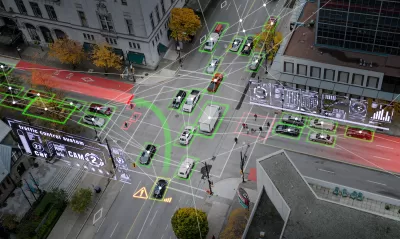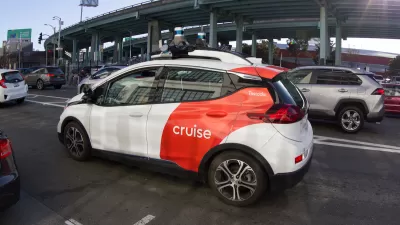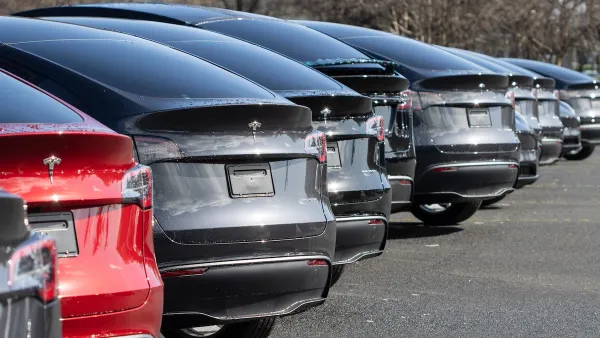How do self-driving cars fit into ‘livable streets?’

An article in Streetsblog USA ponders the future of livable streets as autonomous vehicles start becoming more common on U.S. roads.
As the article explains, “Many sustainable transportation advocates fear that the era of autonomous vehicles will spur us to even further optimize our streets for the efficient operation of machines rather than the cultivation of experiences that make us fully human.” But is it possible to center livability and “make the robo-cars work for us?” the article asks. Streetsblog’s Kea Wilson discusses the issue on The Brake podcast with Dr. Bruce Appleyard, author of Liveable Streets 2.0.
For Appleyard, the worst-case scenario is clear: autonomous cars could lead to more driving, more congestion, and a higher incentive to use vehicles and drive farther. “And what we also see from other studies about autonomous vehicles is that people probably aren't going to pay for the parking of the vehicle, but they're actually gonna continuously cruise,” potentially leading to fleets of self-driving cars creating air pollution and congestion, likely in the most disadvantaged neighborhoods, Appleyard says.
To combat these dangers, Appleyard suggests that “we need to make sure we're very mindful and deliberate in how we go forward to make sure that we maintain both our street livability and our street humanity.” For Appleyard, livability isn’t just about safety and mobility, but “It's how are you being cradled by your environment and encouraged by your environment to, to be at ease, at peace and in a rest restful rejuvenating state.”
FULL STORY: What Do ‘Livable’ Streets Look Like in an Era of Driverless Cars?

Maui's Vacation Rental Debate Turns Ugly
Verbal attacks, misinformation campaigns and fistfights plague a high-stakes debate to convert thousands of vacation rentals into long-term housing.

Planetizen Federal Action Tracker
A weekly monitor of how Trump’s orders and actions are impacting planners and planning in America.

In Urban Planning, AI Prompting Could be the New Design Thinking
Creativity has long been key to great urban design. What if we see AI as our new creative partner?

Pedestrian Deaths Drop, Remain Twice as High as in 2009
Fatalities declined by 4 percent in 2024, but the U.S. is still nowhere close to ‘Vision Zero.’

King County Supportive Housing Program Offers Hope for Unhoused Residents
The county is taking a ‘Housing First’ approach that prioritizes getting people into housing, then offering wraparound supportive services.

Researchers Use AI to Get Clearer Picture of US Housing
Analysts are using artificial intelligence to supercharge their research by allowing them to comb through data faster. Though these AI tools can be error prone, they save time and housing researchers are optimistic about the future.
Urban Design for Planners 1: Software Tools
This six-course series explores essential urban design concepts using open source software and equips planners with the tools they need to participate fully in the urban design process.
Planning for Universal Design
Learn the tools for implementing Universal Design in planning regulations.
planning NEXT
Appalachian Highlands Housing Partners
Mpact (founded as Rail~Volution)
City of Camden Redevelopment Agency
City of Astoria
City of Portland
City of Laramie





























